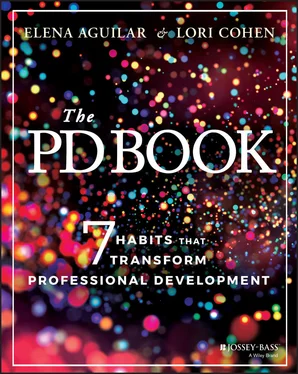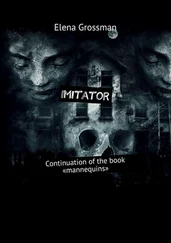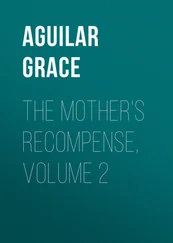Elena Aguilar - The PD Book
Здесь есть возможность читать онлайн «Elena Aguilar - The PD Book» — ознакомительный отрывок электронной книги совершенно бесплатно, а после прочтения отрывка купить полную версию. В некоторых случаях можно слушать аудио, скачать через торрент в формате fb2 и присутствует краткое содержание. Жанр: unrecognised, на английском языке. Описание произведения, (предисловие) а так же отзывы посетителей доступны на портале библиотеки ЛибКат.
- Название:The PD Book
- Автор:
- Жанр:
- Год:неизвестен
- ISBN:нет данных
- Рейтинг книги:5 / 5. Голосов: 1
-
Избранное:Добавить в избранное
- Отзывы:
-
Ваша оценка:
- 100
- 1
- 2
- 3
- 4
- 5
The PD Book: краткое содержание, описание и аннотация
Предлагаем к чтению аннотацию, описание, краткое содержание или предисловие (зависит от того, что написал сам автор книги «The PD Book»). Если вы не нашли необходимую информацию о книге — напишите в комментариях, мы постараемся отыскать её.
The PD Book,
The PD Book
The PD Book — читать онлайн ознакомительный отрывок
Ниже представлен текст книги, разбитый по страницам. Система сохранения места последней прочитанной страницы, позволяет с удобством читать онлайн бесплатно книгу «The PD Book», без необходимости каждый раз заново искать на чём Вы остановились. Поставьте закладку, и сможете в любой момент перейти на страницу, на которой закончили чтение.
Интервал:
Закладка:
This entire book is an attempt to pull back the curtain all the way and share how we design and facilitate learning experiences. We want to tell you how to design and facilitate professional development that transforms how participants think, feel, and what they do—and sometimes feels magical.
We'll come back to Elena's workshop and hear how she pulled back the curtain for the benefit of the participants. But first, we want to usher you into this book by inviting you to recall a transformative learning experience that profoundly altered what you do, how you think, and how you feel. This could have been a cooking class, a communication seminar, a meditation course, a trip abroad, a lecture, or anything that felt like it opened up possibilities and potential.
Pause and remember that experience of transformative learning.
Visualize where you were and the people who were around you. Try to recall how you felt, maybe what you were thinking. Do you remember exploring new ideas and acquiring new skills? Can you recall the intellectual buzz of being challenged and stretched in a good way? Do you remember connecting meaningfully with someone else during the process? If you had a sense of your own growth at the time, did you feel satisfied or excited or hopeful? Think about how you've applied your learning and how doing so changed your life.
Now that you remember this experience, can you identify what made it so good? Perhaps you were pursuing interests and passions: Maybe you'd wanted to learn to play an instrument all your life and it felt good to finally begin learning. Maybe the experience provided you with skills you could use immediately. Or perhaps what made the experience so memorable were the other people—you made new friends or had profound conversations.
Sometimes powerful learning happens alone: Traveling abroad, reading books, and backpacking solo can be transformative. Often powerful learning happens with others, perhaps under the guidance of a mentor or teacher. In the positive learning experience that you just recalled, who was with you, and who guided you? How did other people contribute to your learning experience?
If you didn't recall a learning experience in which you had a teacher or guide, see if you can remember a time when someone facilitated a powerful learning experience for you. Reflect on these questions:
How did your teacher make you feel?
How did you know you could trust your teacher?
What did they do to build community if you were in a group with others?
If you've had firsthand knowledge that transformative learning is possible , then recalling the physical, social, emotional, and intellectual memories of your own experiences can be a source of energy and insight. Those memories can guide you toward a holistic vision for adult learning.
While we hope that you've had an opportunity to experience masterful facilitation, if you haven't, we know that you can still become a transformative facilitator because we've guided thousands of educators toward that end. You'll need to draw on other kinds of positive learning moments—from when you were a kid to recent forays into developing a hobby or learning within your professional field. Your bank of memories might contain only fragments of transformative PD (perhaps you experienced a dynamic speaker or an engaging activity or a beautiful setting), but you can piece together the elements of transformative PD. And we're going to tell you so many stories in this book that you'll be able to round out your imagination with visions of what could be possible.
“I've learned that people will forget what you said, people will forget what you did, but people will never forget how you made them feel.”
—Maya Angelou
A Couple Notes on Anonymity and Terminology
When we use the term we , we mean both Lori and Elena, unless we're explicitly referencing a larger group or we identify others we're including. When we tell stories and write about other people, we change their names and other markers that might reveal their identities. Also know that we use the traditional pronouns he and she , and in recognition of nonbinary gender identification, we also use they .
Pulling Back the Curtain
When Elena revealed the truth behind the random groupings at the workshop, some people looked disappointed. “However,” she quickly added, “I think this is a question about how to get a bunch of strangers to connect quickly and deeply around what really matters.” Heads started nodding. “You're asking about how I created the conditions for learning , the conditions in which each of you could show up fully. What created the conditions for learning that would have allowed you to develop a deep connection with anyone here—because it was about the conditions that I created for you as individuals and for all of you as a group.” A lot of heads were nodding at this point.
“Yes! So how did you do that?” someone asked.
The participants in Elena's workshop fell silent. What they all wanted to know was how the magic happened. Elena hesitated. Rather than giving them the answers, she wanted participants to identify the critical moves. Doing so would help them become stronger facilitators. “Well,” she said, smiling, “what did you observe me do to create the conditions for learning and deep connection?” Elena invited silent reflection and then provided time for participants to discuss their reflections with their home groups.
As Elena and participants pulled back the curtain together, the participants were able to identify many of the design and facilitation moves. They could see that what had happened wasn't magic. They could see how they could replicate what Elena had done back in their schools and organizations.
What they'd noticed, and what Elena expanded on, were the following design and facilitation moves:
Elena made the why and the what for the institute explicit, over and over and over, in many places. Starting with the registration process, she went overboard in explaining the purpose for the learning experience and what would happen hour by hour. She emphasized the time for reflection and processing with others, and the immersive nature of the experience, and she provided a lengthy list of objectives and intended outcomes.
Elena made expectations for the retreat very clear in the description, in emails and video messages from her that participants received before it started, and, finally, on the first day in person. For example, in the description of the institute, she wrote, “Participants must commit to being present during the entire institute: Your presence is expected from the first to the last minute. If you are not able to make the entire retreat, please do not register.” She also stated (over and over) that cell phones could be used during breaks and before and after our sessions, but that otherwise they would need to be off and out of sight. She also explained that she was making this request for the sake of the community that would be built. These expectations helped to describe the how of the institute.
Elena built buy‐in to these outcomes and expectations on the first day. She engaged participants in activities around hopes and fears for the institute, community agreements, and how everyone could show up as their best selves. She guided folks toward making authentic connections to the objectives. She clarified that her role was to provide learning structures and facilitate processes, but that everyone shared collective responsibility for what happened.
Elena paid attention to every little detail. She had thought through timing and learning sequence and snacks. She'd considered materials and music, the comfort of the seats, and the pros and cons of air conditioning versus open windows. She'd planned activities to meet the needs of introverts and extroverts and to play to different learning intelligences, and she'd planned how to best explain each activity and how to transition between them. And there was so much more. Her facilitator's agenda was 28 pages long—an indication of the level of detail in her preparation.
Читать дальшеИнтервал:
Закладка:
Похожие книги на «The PD Book»
Представляем Вашему вниманию похожие книги на «The PD Book» списком для выбора. Мы отобрали схожую по названию и смыслу литературу в надежде предоставить читателям больше вариантов отыскать новые, интересные, ещё непрочитанные произведения.
Обсуждение, отзывы о книге «The PD Book» и просто собственные мнения читателей. Оставьте ваши комментарии, напишите, что Вы думаете о произведении, его смысле или главных героях. Укажите что конкретно понравилось, а что нет, и почему Вы так считаете.












